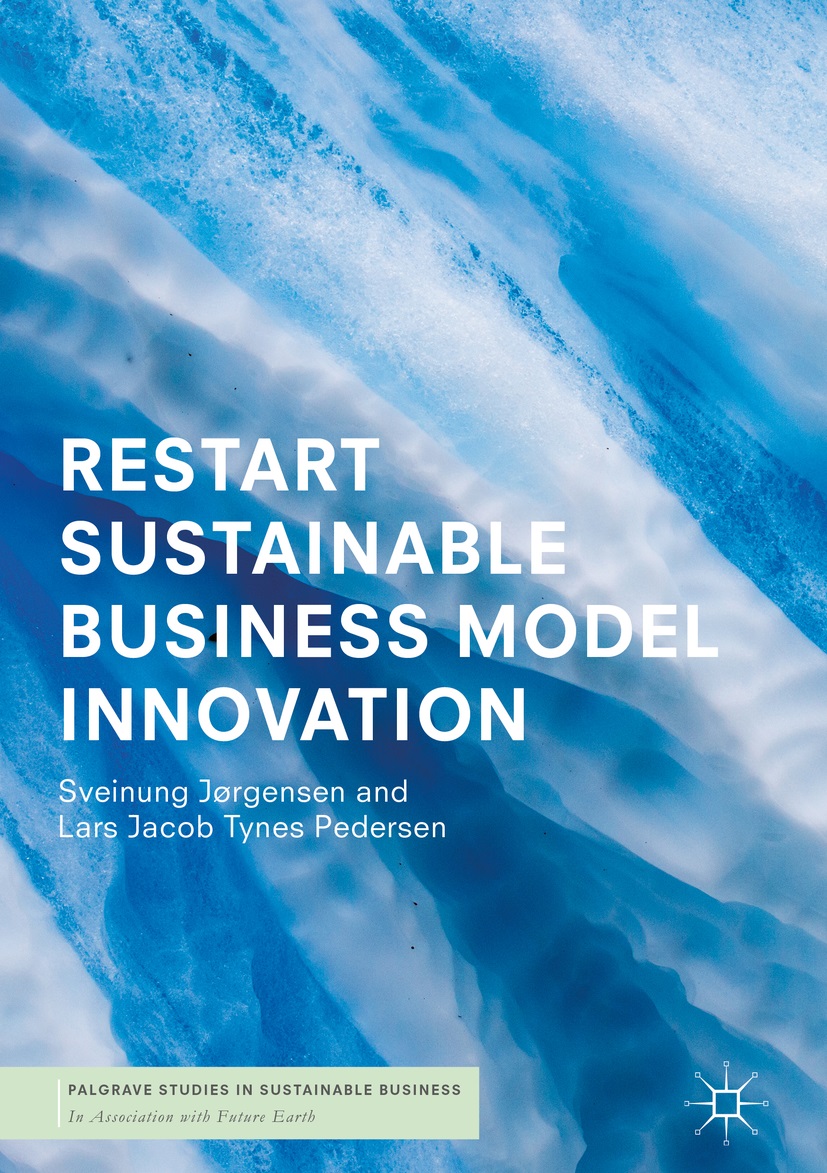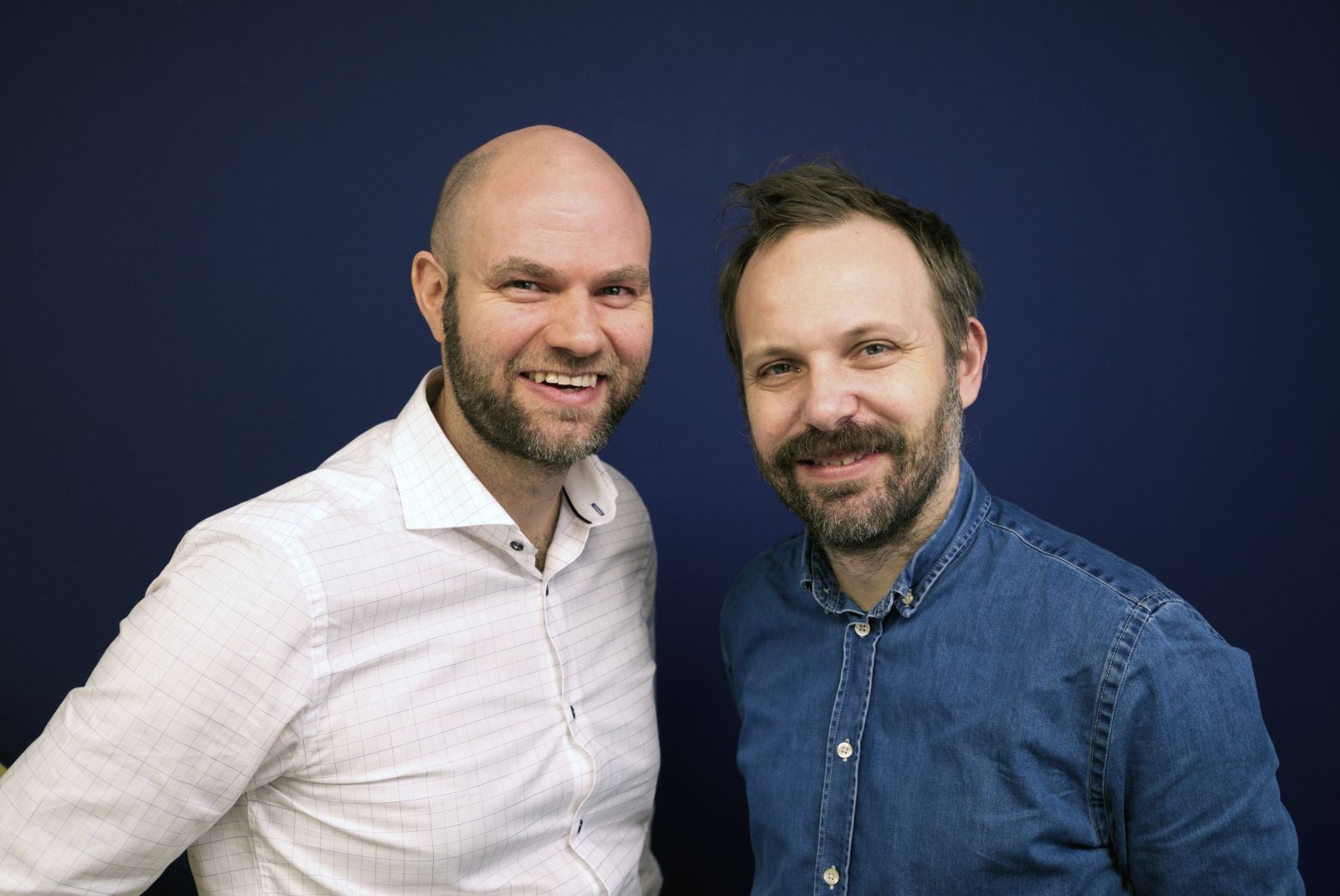Making big business sustainable one RESTART at the time?
In our new, free Open Access book, RESTART Sustainable Business Model Innovation, we show how companies can design business models that are both sustainable and profitable. The book was published as a part of Palgrave Studies in Sustainable Business In Association with Future Earth, which is edited by two of the foremost thinkers in this field, Paul Shrivastava and Laszlo Zsolnai.

In the first four weeks, RESTART was downloaded more than 10 000 times. This is an indication of the huge demand for knowledge about how to align sustainability and profitability by means of new and innovative business models. Given the severity of the social and environmental problems we are facing, companies need to speed up their efforts substantially.
One example is the Norwegian company Scanship, the high performer on the Oslo Stock Exchange in 2017. This company is in the business of cleaning up after others, in the sense that it has primarily delivered waste management services for cruise ships. These services are highly necessary, because without Scanship’s services, a cruise ship with 5,000 guests has an environmental footprint equivalent to a city with 25,000 inhabitants. Thus, Scanship’s business model contributes to mitigate a major problem for the cruise industry.
But the cruise industry is not the only industry in need of clean-up. In 2017, we “used” 1.6 earths, while we of course only have one. August 1st of this year – the day on which our book was published – was incidentally also the date when we marked the earliest ever occurrence of Earth Overshoot Day – the day when we have used all the resources available to us and emitted as much as the planet can endure if we are to live sustainably. For the remainder of the year, we borrow from future generations. Will we ever pay them back?
Our current way of living is arguably not in line with sustainable development, which is about meeting today's needs without compromising the next generation's ability to cover their needs. Or to put it in economic terms: Sustainability implies living off the interest, not the capital. Our current way of living depletes nature’s capital, and combined with population growth and the need for increased affluence all around the world, humanity’s footprint will likely increase in the future. If all of humanity lived like we do in Norway, where we are currently writing this blogpost, we would need four Earths, not “only” 1.6 as today.
Hence, we are all "cruise passengers" on Earth, and we are eating from the buffet with excessive appetite. In order to turn the tide, we need companies that contribute with new and smarter solutions. There are huge business opportunities for companies that understand this, and together with Scanship we are trying to figure out how the company can redesign their business model in order to solve other sustainability problems as well.
Scanship now develops a microwave technology that can convert food and other waste into fuel and clean coal through carbon capture. The coal can be used for soil improvement and in a number of industrial processes. When this technology is installed on the cruise ships, it will reduce both the ships' footprints and fuel costs. Richard Branson and Virgin Voyages therefore use Scanship as a partner for Virgin's new fleet of cruise ships. Because of its ability to solve sustainability problems, Scanship is also an attractive partner and problem solver for actors in other industries.
In our research, we work with both Scanship and other companies that try to design business models that are (more) sustainable while at the same time being profitable. These are, for example, product manufacturers who want to get rid of disposable plastics in their packaging, financial institutions that want to make customers invest in sustainable funds and large retailers who want to become more circular by facilitating reuse rather than today’s business model based on “take, make and dispose”.
The goal of these research projects is to investigate sustainable business model innovations that can reduce our collective footprint. Compared to when we began our research on these themes more than a decade ago, sustainability is now high on the corporate agenda. After all, there is no use in merely talking about sustainability when the customers turn their backs on your products because they contain palm oil or excessive amounts of single-use plastics.
The development towards more sustainable business models is strengthened by new technologies that make it possible to produce and distribute products and services with lower footprints. In addition, there is a change in customer preferences that enable the exploitation of such technologies for sustainability-related purposes. Just think of the so-called "access economy", which implies means that music is now streamed through our phones, rather than played on tons and tons of physical records that were once produced and distributed together with record players and huge speakers. This may seem like a banal example on a burning planet. But it merely one example of how consumption is changing – in this case from the ownership of physical products to the use of lower-footprint digital services. Similar examples can be found in almost any industry.

Photo: Sveinung Jørgensen and Lars Jacob Tynes Pedersen
Our contribution to understanding how sustainability can become big business, is a framework we call RESTART. This is an acronym of seven letters that correspond with seven steps to sustainable business models. In our new book, we have developed the framework to provide decision-makers in various industries with a framework for conducting sustainable business model innovations. Thus, we designed it to deal with questions like what the company will deliver and to whom, how to design more sustainable business models in practice; and – not at least – how the company can profit from minimizing its negative and maximizing its positive externalities.
We have developed and used the RESTART framework for a period of many years, and we based the framework on seven changes in the ways companies create, deliver and capture value:
Redesign rather than standstill
Experimentation rather than turnaround
Service-logic rather than product-logic
The circular rather than the linear economy
Alliances rather than solo-runs
Results rather than indulgences
Three-dimensionality rather than one-dimensionality
New business models are emerging across all sectors, and redesign of business models reflects new ways to create, deliver and capture value, by taking into consideration sustainability issues and technological capabilities as drivers for business model innovation. To successfully redesign business models, it is necessary to conduct controlled experiments to identify and analyze what works and what does not. Rather than putting all eggs in the same basket, one should rather experiment on the way to a new business model.
In many cases, sustainable business can be promoted by a service-logic, in which value creation and value delivery are oriented towards giving the customer access to what he or she needs, rather than offering it in the form of a product based on ownership. There is no company in the world that does not use energy, water and other natural resources, or that do not generate to some extent excess resources and waste from their operations. To become more sustainable in a way that is compatible with financial performance, it can be helpful to think in terms of the circular economy in designing the way resources are acquired, processed, used and ultimately reused.
Solutions of the type that promotes circulation and service thinking will often require that businesses enter into alliances with other organizations that may enable them to create and deliver value in this way. This enables exploitation of the complementarity between companies, and even facilitates manufacturing, logistics or other processes that involves smarter use of resources than if companies do not cooperate.
In order to set the right goals and to prioritize the right efforts that can promote sustainability and profitability, it is essential to emphasize the right results. This involves identifying key externalities and material sustainability concerns that are critical for corporate strategy and operations. To succeed in achieving these goals, the entire organization must be designed in a way that reflects three-dimensionality. This means reflecting social, environmental and economic objectives in organizational design, leadership and management control systems.
More knowledge is needed about how businesses can design sustainable and profitable business models. We are, however, worried that this work is going too slowly, even though we see the traces of real change. Hopefully, RESTART Sustainable Business Model Innovation can contribute to maintaining the momentum towards many more sustainable business models. We need them in order to ensure a sustainable future. In that sense, maybe business can be the solution after all.
Sveinung Jørgensen is Associate Professor, PhD at Inland Norway University of Applied Sciences. Lars Jacob Tynes Pedersen is Associate Professor, PhD at NHH Norwegian School of Economics, where he is Head of the Centre for Ethics and Economics. They work together as researchers and sustainability adventurers, and they engage closelywith companies to give research based answers on how to design sustainable business models. They give key note presentations, teach and facilitate workshops. They also serve on boards and advisory boards, and in other ways work with organizations that aim to design and implement sustainable and profitable business models in practice. Find more information about them here: www.JorgensenPedersen.no
DATE
September 11, 2018AUTHOR
Lars Jacob Tynes PedersenSveinung Jørgensen
SHARE WITH YOUR NETWORK
RELATED POSTS
Spotlight on LMICs – Tired of Breathing in Pollutants? Time for Better Fuel Economy and Vehicle Standards
Future Earth Taipei Holds 2024 Annual Symposium
Spotlight on LMICs – The Future’s Juggernaut: Positioning Research as Anchors for Environmental Health